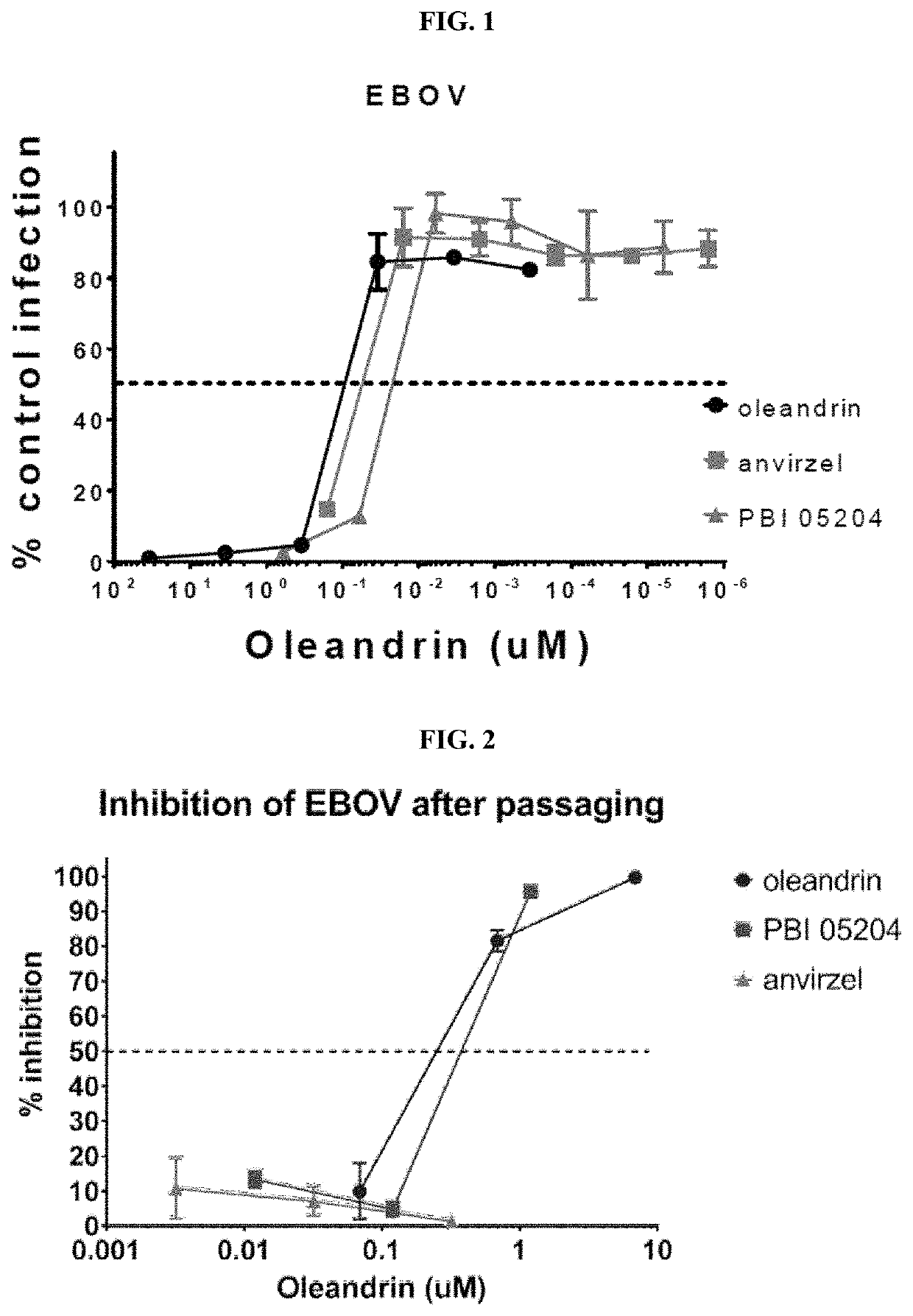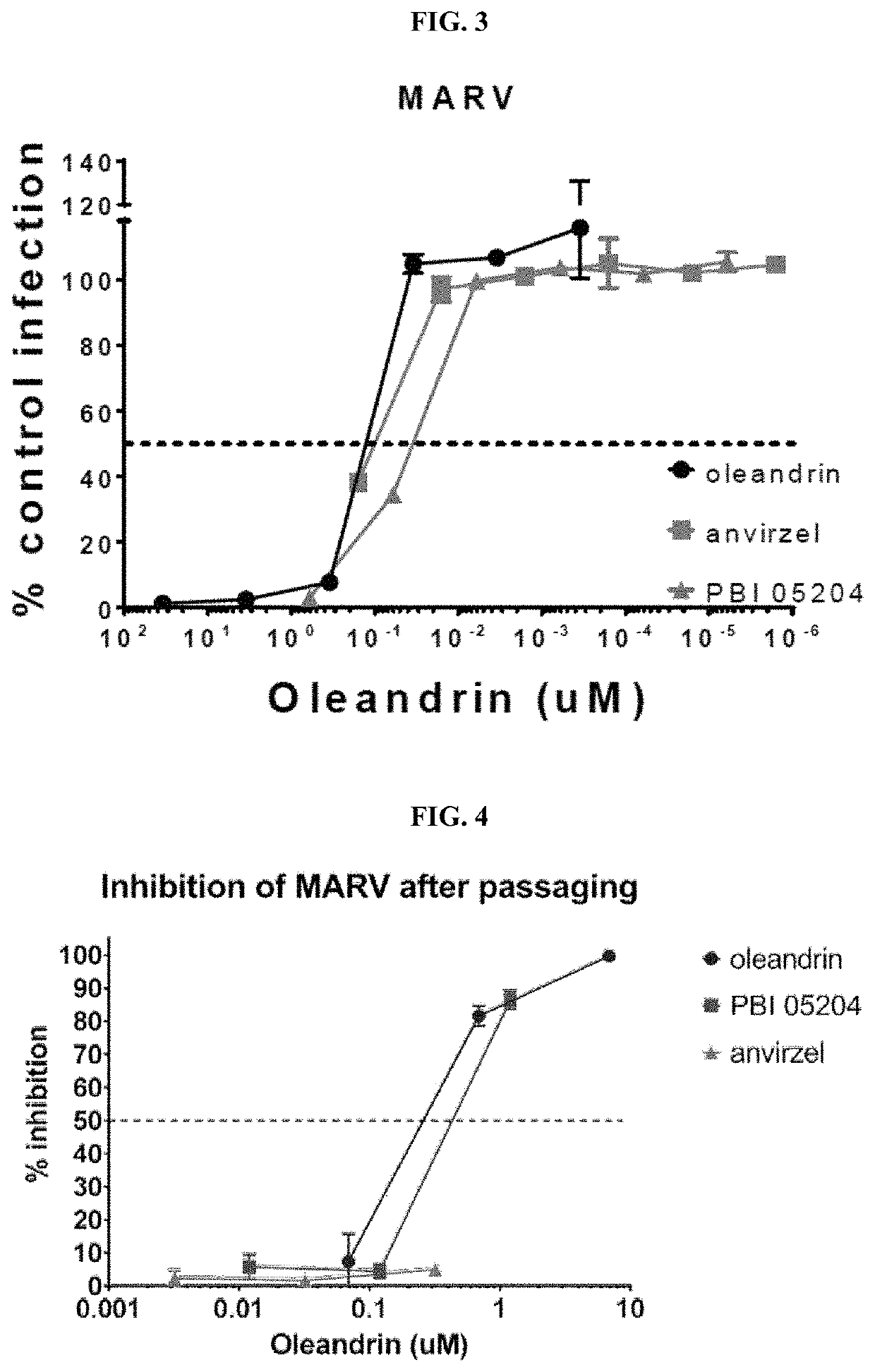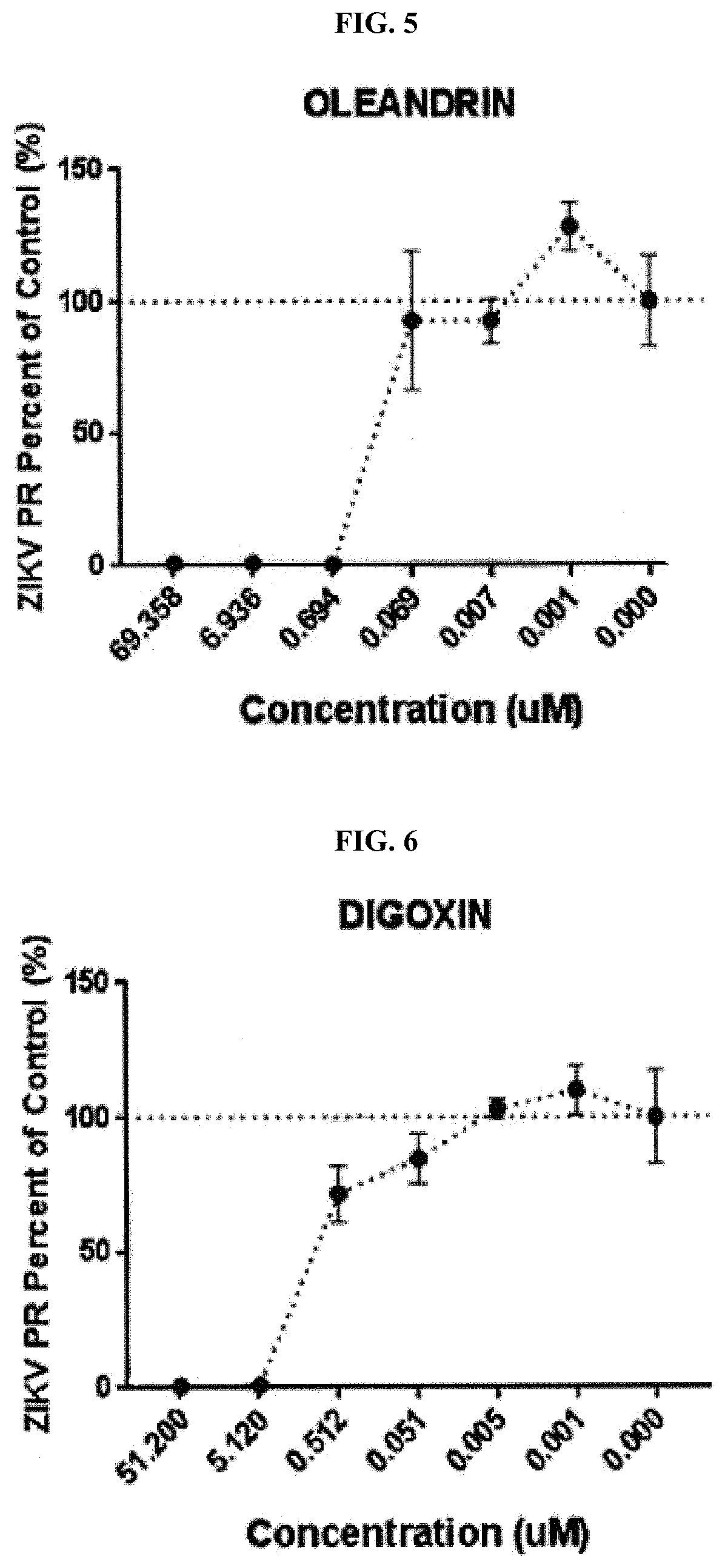Method and compostitions for treating coronavirus infection
a technology of coronavirus and compostition, which is applied in the field of antiviral composition, can solve the problems of no commercial therapeutically effective drugs, no prophylactic drugs available to treat ebov (eboval virus) and marv (virus) infections, widespread morbidity and mortality, etc., and achieve the effect of reducing the infectivity of progeny viruses
- Summary
- Abstract
- Description
- Claims
- Application Information
AI Technical Summary
Benefits of technology
Problems solved by technology
Method used
Image
Examples
example 1
Supercritical Fluid Extraction of Powdered Oleander Leaves
Method A. With Carbon Dioxide.
[0243]Powdered oleander leaves were prepared by harvesting, washing, and drying oleander leaf material, then passing the oleander leaf material through a comminuting and dehydrating apparatus such as those described in U.S. Pat. Nos. 5,236,132, 5,598,979, 6,517,015, and 6,715,705. The weight of the starting material used was 3.94 kg.
[0244]The starting material was combined with pure CO2 at a pressure of 300 bar (30 MPa, 4351 psi) and a temperature of 50° C. (122° F.) in an extractor device. A total of 197 kg of CO2 was used, to give a solvent to raw material ratio of 50:1. The mixture of CO2 and raw material was then passed through a separator device, which changed the pressure and temperature of the mixture and separated the extract from the carbon dioxide.
[0245]The extract (65 g) was obtained as a brownish, sticky, viscous material having a nice fragrance. The color was likely caused by chlorop...
example 2
Hot-Water Extraction of Powdered Oleander Leaves. (Comparative Example)
[0249]Hot water extraction is typically used to extract oleandrin and other active components from oleander leaves. Examples of hot water extraction processes can be found in U.S. Pat. Nos. 5,135,745 and 5,869,060.
[0250]A hot water extraction was carried out using 5 g of powdered oleander leaves. Ten volumes of boiling water (by weight of the oleander starting material) were added to the powdered oleander leaves and the mixture was stirred constantly for 6 hours. The mixture was then filtered and the leaf residue was collected and extracted again under the same conditions. The filtrates were combined and lyophilized. The appearance of the extract was brown. The dried extract material weighed about 1.44 g. 34.21 mg of the extract material was dissolved in water and subjected to oleandrin content analysis using high pressure liquid chromatography and mass spectrometry. The amount of oleandrin was determined to be 3...
example 3
Preparation of Pharmaceutical Compositions
Method A. Cremophor-Based Drug Delivery System
[0251]The following ingredients were provided in the amounts indicated.
[0252]
ReagentPercent of FormulationNameFunction(% w / w)Antiviral compositionActive agent3.7Vitamin EAntioxidant0.1LabrasolSurfactant9.2EthanolCo-solvent9.6Cremophor ELSurfactant62.6Cremophor RH40Surfactant14.7
[0253]The excipients were dispensed into ajar and shook in a New Brunswick Scientific C24KC Refrigerated Incubator shaker for 24 hours at 60° C. to ensure homogeneity. The samples were then pulled and visually inspected for solubilization. Both the excipients and antiviral composition were totally dissolved for all formulations after 24 hours.
Method B. GMO / Cremophor-Based Drug Delivery System
[0254]The following ingredients were provided in the amounts indicated.
[0255]
ReagentPercent of FormulationNameFunction(% w / w)antiviral compositionActive agent4.7Vitamin EAntioxidant0.1LabrasolSurfactant8.5EthanolCo-solvent7.6Cremophor ...
PUM
 Login to View More
Login to View More Abstract
Description
Claims
Application Information
 Login to View More
Login to View More - R&D
- Intellectual Property
- Life Sciences
- Materials
- Tech Scout
- Unparalleled Data Quality
- Higher Quality Content
- 60% Fewer Hallucinations
Browse by: Latest US Patents, China's latest patents, Technical Efficacy Thesaurus, Application Domain, Technology Topic, Popular Technical Reports.
© 2025 PatSnap. All rights reserved.Legal|Privacy policy|Modern Slavery Act Transparency Statement|Sitemap|About US| Contact US: help@patsnap.com



